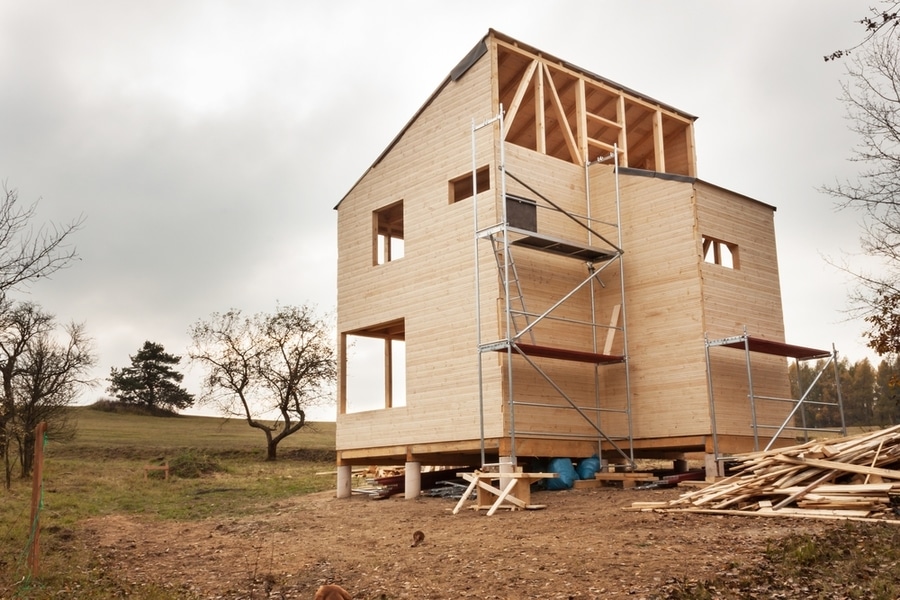500 Hood Road, Suite 320Markham ONL3R 9Z3

A building envelope can be described as the physical components of the exterior wall system of a building. A building envelope functions as a separation between the inside from the outside. Its main purpose is to protect inside contents from elements, including the resistance to air, water, heat, light, and noise transfer often but not exclusively caused by various weather conditions.
A building envelope consists of exterior walls, foundation, roofing, windows, doors, and other various elements which are a divide between the inside and outside. A structure can contain more than one building envelope.
These types can also include insulation, structures, a thermal barrier, and external sealing and waterproofing elements. These components, when added to building envelopes, can improve a building's habitat when it comes to air movement, indoor air quality, or energy efficiency
Anyone in the construction industry will tell you two things:
(1) Premium building envelope components and their proper installation can certainly add to upfront construction costs of residential, commercial, or industrial buildings.
(2) When a building envelope has thoughtful and well-crafted components of the structure, such as a structural wall with openings, the pressure on the structure and building systems of the building is significantly lessened.
Not only will you lengthen the lifespan of components of the building but you'll save money in terms of energy savings.
It’s safe to say that what may seem like a high cost for proper building envelopes on the front-end may turn into immeasurable value in utility costs and increase the life span of mechanicals.
There are two stages that comprise building envelope systems: a primary barrier, and a secondary waterproofing system. The secondary 'double stage' system of a building enclosure includes masonry walls and other cladding systems.
There are many building components, such as structural walls that also serve another purpose in addition to the way in which they provide structural support.
An envelope acts as an air/vapour barrier which helps moisture control, temperature control, and airflow.
There are several codes required that must be followed when designing and planning building envelope restoration. Avoid DIY disasters from the start by connecting with Accent Building Sciences Inc (ABSI https://absi.ca/). We work with private and public organizations to design and manage construction projects, assess and provide solutions. We can help with the science of the building to make sure it meets all requirements of the building code.
Another way to keep your building within regulation is to follow the building envelope design guide, which is a resource page that is continually updated to provide the best and most efficient building design.
These codes also help regulate the cost of the building. The building envelope design is specifically important in managing building costs, as it controls and determines factors such as lighting, sound/acoustics, and temperature.
What may seem like a high cost for proper building envelopes on the front-end may turn into long-term immeasurable value in lower utility costs and increased life span of the mechanicals.
1. What is a building envelope system? A building envelope system is the exterior wall system of a building that protects the interior from elements like water, air, heat, and noise.
2. Why is a building envelope important? It separates the inside from the outside, protects against various weather conditions, and maintains a comfortable indoor environment.
3. What components are part of a building envelope? Components include walls, roofing, foundation, windows, doors, insulation, thermal barriers, and more.
4. How does a building envelope affect energy efficiency? Proper insulation, air sealing, and ventilation contribute to energy efficiency, reducing utility costs and mechanical wear.
5. What functions do envelope components serve? They offer structural support, control moisture and temperature, manage airflow, and contribute to overall comfort and energy efficiency.
6. How do building codes affect envelope design? Building codes ensure that envelopes meet safety, efficiency, and functionality standards. They also influence construction costs.
7. Why invest in a quality building envelope upfront? While it may increase initial costs, a well-designed envelope leads to long-term energy savings, reduced utility costs, and extended component life span.
For any concerns about building envelope systems. Our expert team is based at 2800 14th Ave, Unit 13, Markham, ON L3R 0E4, proudly serving the Toronto area. To connect with us in Toronto, dial 416-939-0129. If you're in the Durham Region, reach out at 416-871-7453. Count on us for comprehensive building science solutions tailored to your needs.

Naji Hassan, a renowned professional in Building Science and Engineering, brings a wealth of knowledge and experience to his field. Educated at Beirut Arab University and Harvard Business School Online, Hassan has honed his expertise in structural and municipal engineering, building science, and business management. As the President of Accent Building Sciences and an experienced Senior Project Manager, he has made significant strides in building envelope engineering, building condition assessments, and energy retrofit programs. His commitment to innovation and excellence is evident in his approach to large-scale project management and his active participation in industry organizations. Hassan is not only a leader in his field but also a prolific writer and thought leader. He regularly shares his insights and experiences through articles on LinkedIn, which can be found at LinkedIn Articles. Additionally, he maintains a blog where he delves deeper into various aspects of building science, accessible at Accent Building Sciences Blog. Outside of his professional pursuits, Hassan enjoys travel, golf, languages, gardening, and music, reflecting his diverse interests and well-rounded character. Naji Hassan's journey in building science and engineering is not just a career but a testament to his lifelong dedication to learning, teaching, and inspiring others in his field.

500 Hood Road, Suite 320Markham ONL3R 9Z3